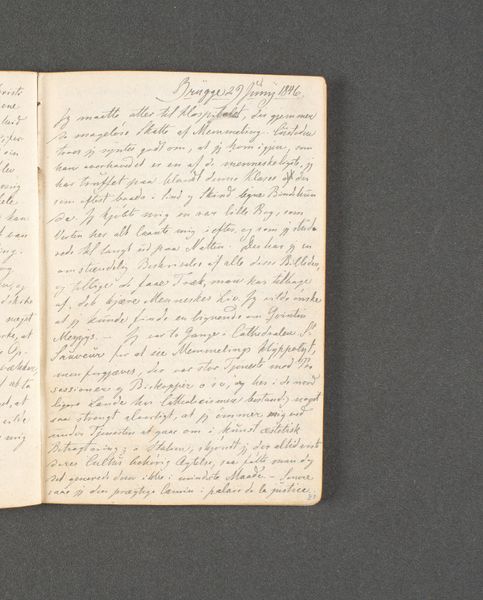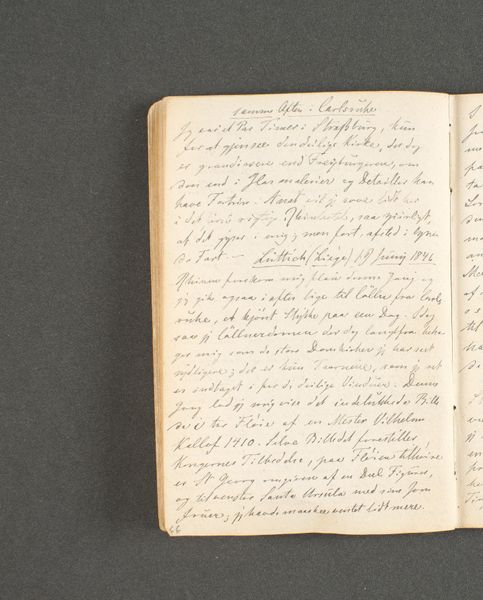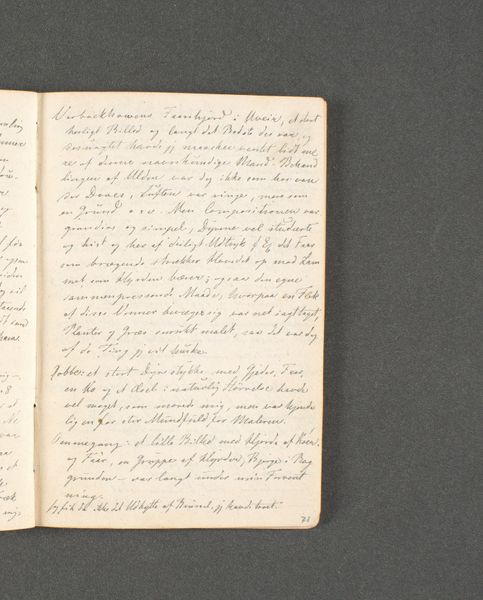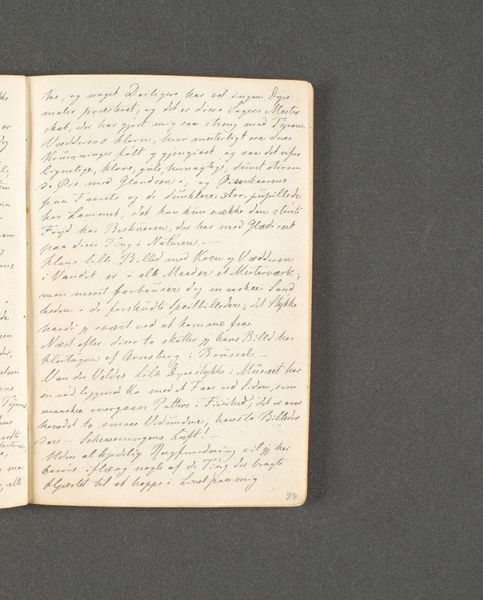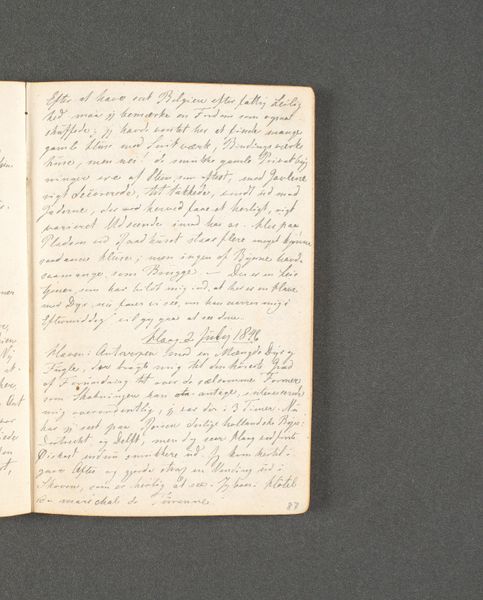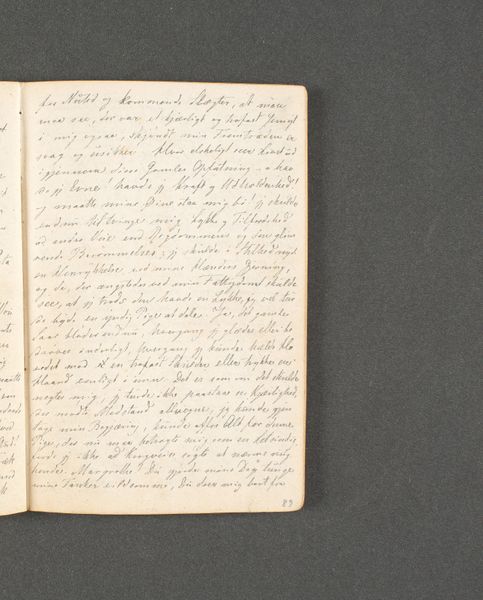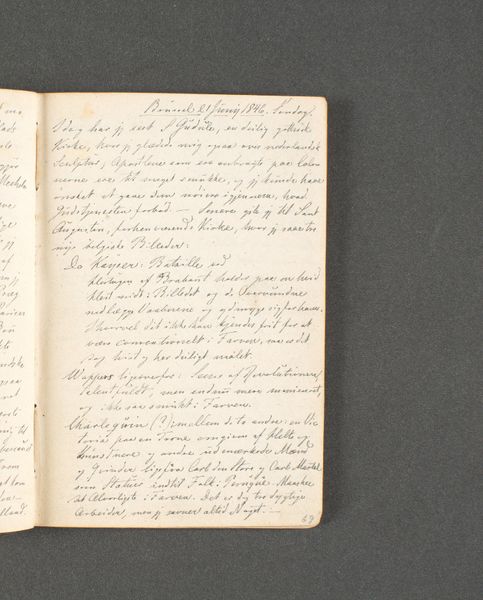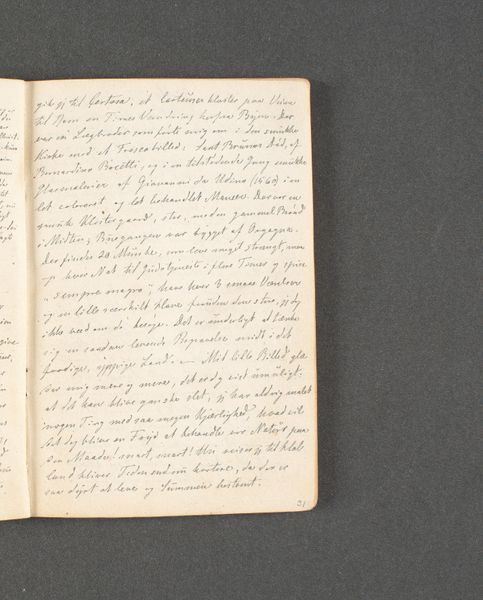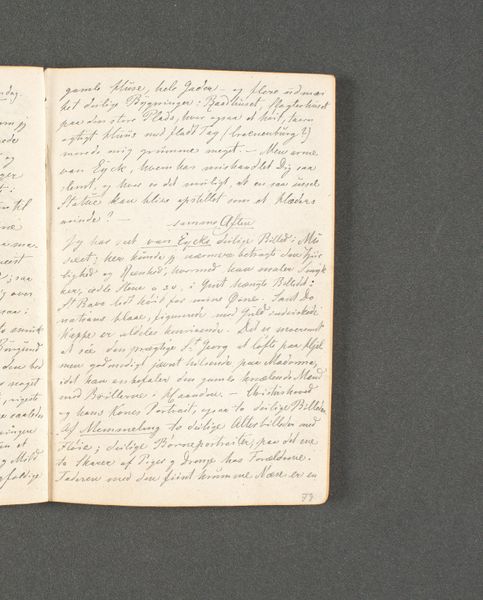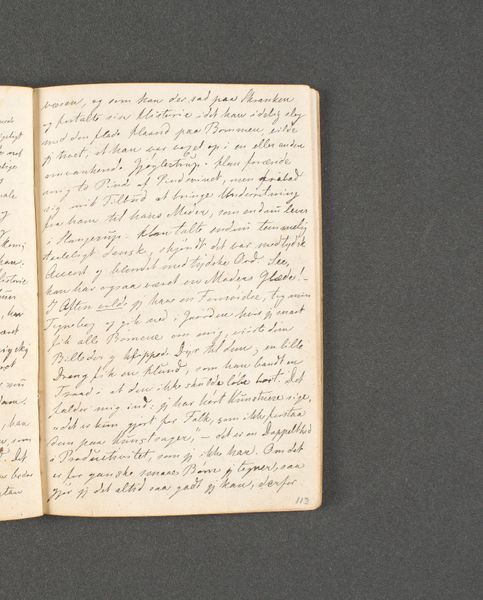
drawing, paper
#
drawing
#
sketch book
#
landscape
#
paper
#
romanticism
#
miniature
Dimensions: 131 mm (height) x 89 mm (width) (bladmaal)
Curator: We’re looking at "Rejsedagbog. Brügge," a travel journal entry by Johan Thomas Lundbye from 1846, housed at the SMK. It's a miniature drawing on paper. My initial reaction is one of intrigue; the text seems to fill the page, leaving little room to 'breathe.' Editor: It does feel dense, doesn't it? Lundbye was heavily influenced by Romanticism and, seeing this, it's tempting to view this journal entry as a kind of relic representative of its time. Think about what travel meant in 1846—a more involved, romantic, reflective practice perhaps. Curator: I can see that. The meticulous script and lack of illustration speak volumes about the purpose of a travel journal during that period. It seems focused on capturing immediate, unfiltered impressions. It serves as documentary evidence of his emotional response to art of the past when it had only recently come to be seen that way. Editor: Absolutely. There's an interesting tension here between the personal, subjective experience and the societal norms influencing how travel—and its documentation—were perceived. This form of Romantic-era travel combined reflection with rigorous and learned appreciation. Curator: Consider also the implied audience, or lack thereof. Was this meant to be shared? Is that shaping the visual style? There’s so little visual information—so what does this imply about what Lundbye saw to be truly important to document? Editor: Right. Is the choice of script related to a desired image or identity? By emphasizing handwritten text and omitting any drawn imagery, Lundbye elevates words as the primary—if not sole—medium of representation in his journal entry. Perhaps, for him, writing facilitated a direct conduit for channeling sensory observations—visual ones included. Curator: Yes! And if we were to expand upon that, it is interesting how what we interpret the intention and potential outcomes of his choices given art and society at the time this was composed. I suppose his aim may not be as direct and true of documentation, or could it? What do you make of that in terms of the intrinsic design elements themselves? Editor: It is as if these marks attempt to give structure and form to time as its being experientially witnessed in place—not as simply objective information to recall later but a sensory event made more real. Perhaps, by visually translating sensation to mark, to inscription, the journal entry strives to act as a record and real artifact all at once? It’s fascinating. Curator: A fruitful way to consider how such a personal document is inextricably linked to cultural values of the time. Editor: Agreed. It’s a wonderful example of how form and content mutually inform each other within art's cultural fabric.
Comments
No comments
Be the first to comment and join the conversation on the ultimate creative platform.
